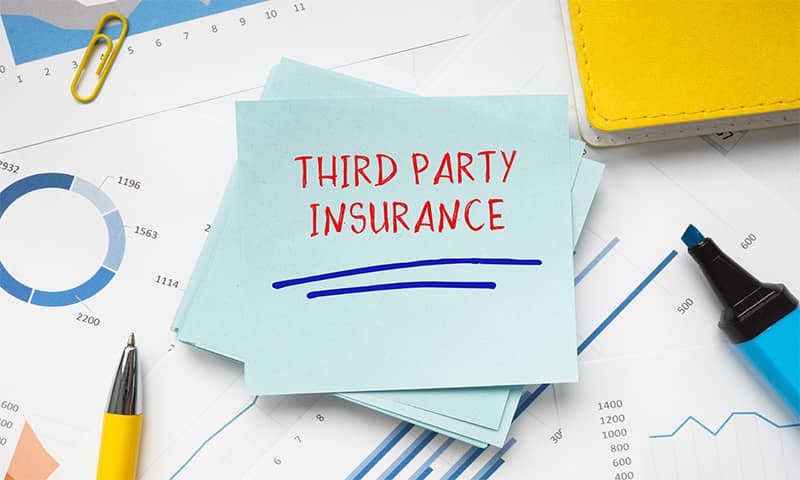What is a Third-Party Insurance Claim? (& How to File One)

If you’ve been in an accident, you may have heard the terms “first-party claim” and “third-party claim” thrown around. But what do these terms mean, and how do they impact your ability to recover compensation for your losses? In this article, we’ll break down the basics of third-party insurance claims and guide you through the process of filing one.
First Party vs. Third Party Insurance Claims: What’s the Difference?
A first party insurance claim is one that you file with your own insurance company. For example, if you’re in a car accident and you file a claim with your own auto insurance provider, that’s a first-party claim.
On the other hand, a third-party claim is one that you file with another party’s insurance company. So, if you’re in a car accident caused by another driver, and you file a claim with their auto insurer, that’s a third-party claim.
It’s important to note that in some situations, like a car accident, you may need to file both types of claims. But in other cases, you may only file one or the other.
Common Scenarios for Third-Party Insurance Claims
Third-party claims can arise in a variety of situations. Some common examples include:
- Car accidents where another driver is at fault
- Slip and fall incidents on someone else’s property
- Dog bites or animal attacks
How New York’s No-Fault Laws Affect Your Claim
New York is a “no-fault” state when it comes to auto insurance. This means that if you’re in a car accident, your own insurance company will provide coverage for certain basic losses, regardless of who was at fault for the crash.
Under New York’s no-fault system, you’ll generally start by filing a first-party claim with your own insurer. However, no-fault coverage is limited and does not cover things like pain and suffering. To recover for these types of losses, you may need to file a third-party claim against the at-fault driver.
It’s also important to note that New York law requires drivers to carry uninsured/underinsured motorist coverage (UM/UIM). This type of coverage, which is considered a first-party benefit, can provide compensation for pain and suffering if you’re in an accident caused by a driver with insufficient or no insurance.
Steps to File a Third-Party Insurance Claim
If you need to file a third-party claim, here are the key steps to follow:
- Gather necessary information, including the at-fault party’s insurance policy number and contact information.
- Notify the other party’s insurer that you intend to file a claim.
- Provide a detailed account of the incident and your damages.
- Submit supporting documentation, such as police reports, medical records, and receipts for any out-of-pocket expenses.
- Negotiate a settlement with the insurer or pursue legal action if a fair agreement can’t be reached.
Tips for Documenting Your Damages
To build a strong third-party claim, it’s crucial to keep detailed records of all your losses. This may include:
- Medical bills and records related to any injuries
- Receipts for property damage repairs
- Documentation of lost wages if you missed work due to the incident
- Photos of property damage and injuries
Communicating with Insurance Adjusters
When you file a third-party claim, you’ll likely be dealing with an insurance adjuster from the at-fault party’s insurer. It’s important to remember that these adjusters work for the insurance company, not for you. Their job is to minimize payouts and settle claims as cheaply as possible.
Be cautious when communicating with adjusters. Avoid giving recorded statements or signing any documents without first consulting with an attorney. Insurance companies may use tactics to try to shift blame onto you or minimize the severity of your losses.
When to Hire an Attorney for Your Third-Party Insurance Claim
While you can file a third-party claim on your own, there are situations where it’s highly advisable to seek the help of an experienced personal injury attorney. Consider hiring a lawyer if:
- Your injuries are severe or permanently disabling
- Liability for the incident is disputed
- The insurance company denies your claim or offers an unfairly low settlement
- Your losses exceed the at-fault party’s insurance limits
An attorney can handle communication with the insurer, gather evidence to support your claim, and negotiate for a fair settlement. If necessary, they can also file a lawsuit and represent you in court.
Time Limits for Third-Party Claims in New York
In New York, there are strict deadlines for filing personal injury and property damage claims. These deadlines, known as statutes of limitations, vary depending on the specifics of your case:
- For most personal injury claims, you have three years from the date of the incident to file a lawsuit (NY CPLR § 214).
- For property damage claims, the statute of limitations is generally three years as well (NY CPLR § 214).
There are some exceptions and nuances to these rules. For instance, claims against a government entity have much shorter notice requirements. It’s best to consult with an attorney as soon as possible after an incident to ensure you don’t miss any critical deadlines.
Protect Your Rights After an Accident in New York
Navigating the world of insurance claims after an accident can be daunting. But, understanding your rights and the claims process is crucial to securing the compensation you deserve.
If you’ve been injured due to someone else’s negligence in New York, the attorneys at Held & Held are here to help. We have extensive experience handling complex third-party insurance claims and fighting for the rights of accident victims.
Don’t try to take on the insurance companies alone. Contact us today for a free, no-obligation consultation.
